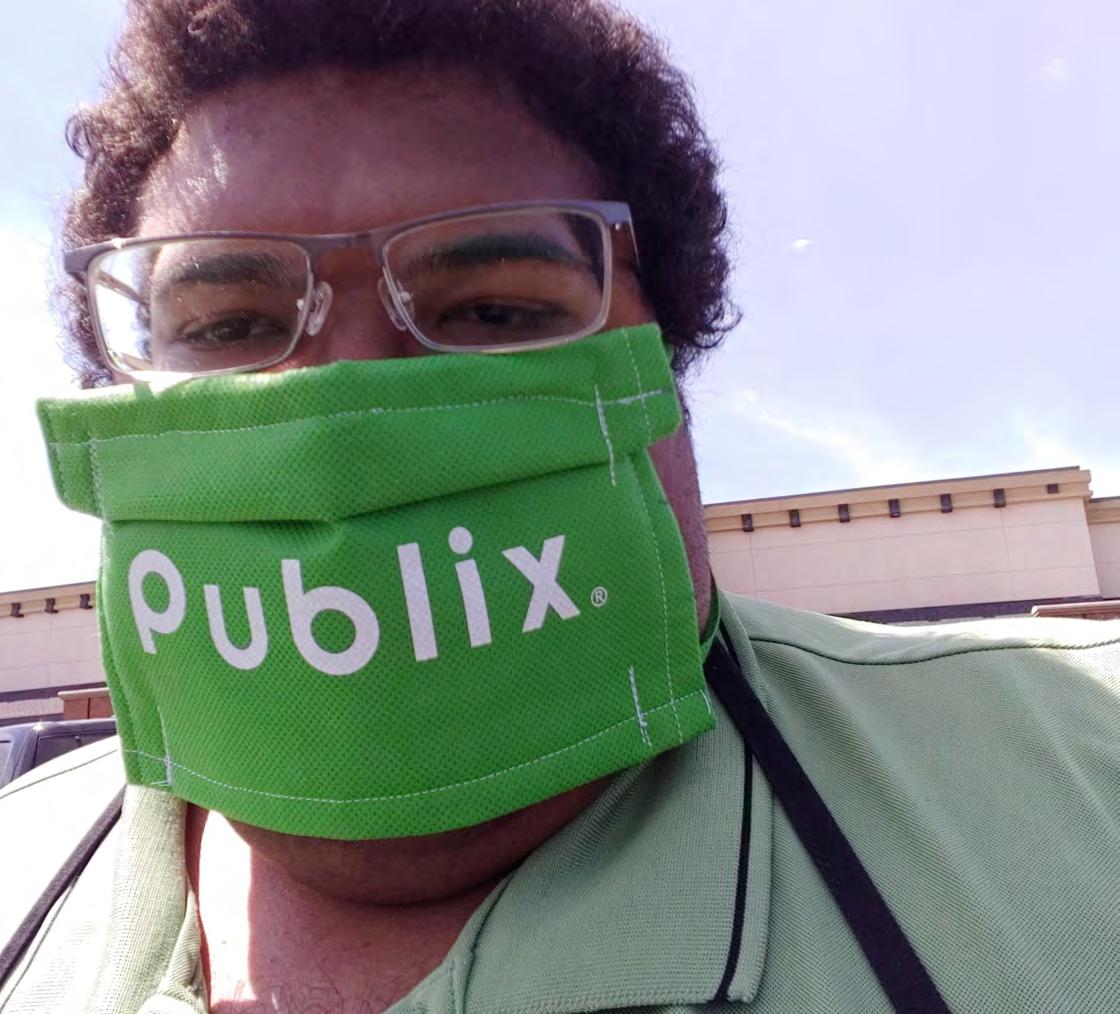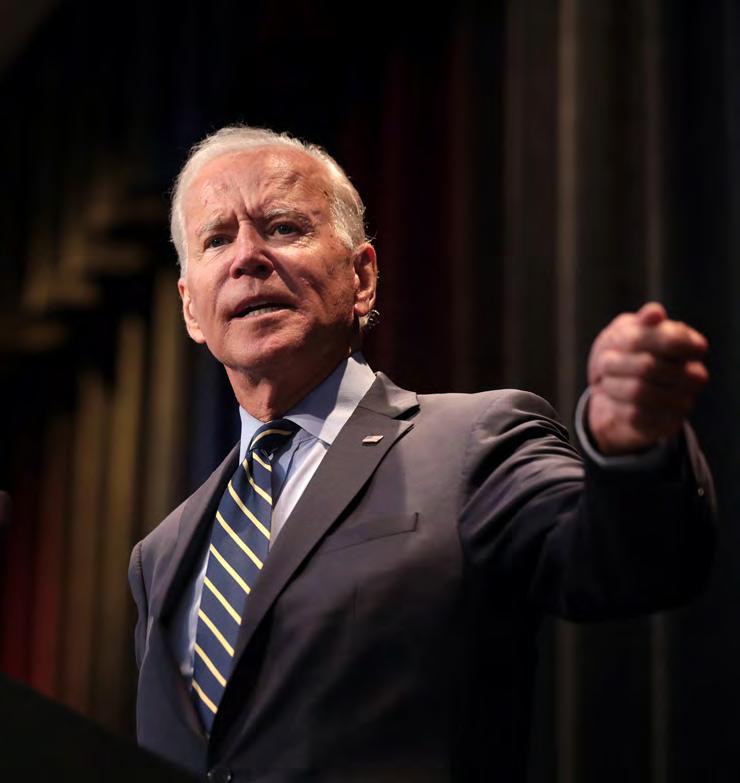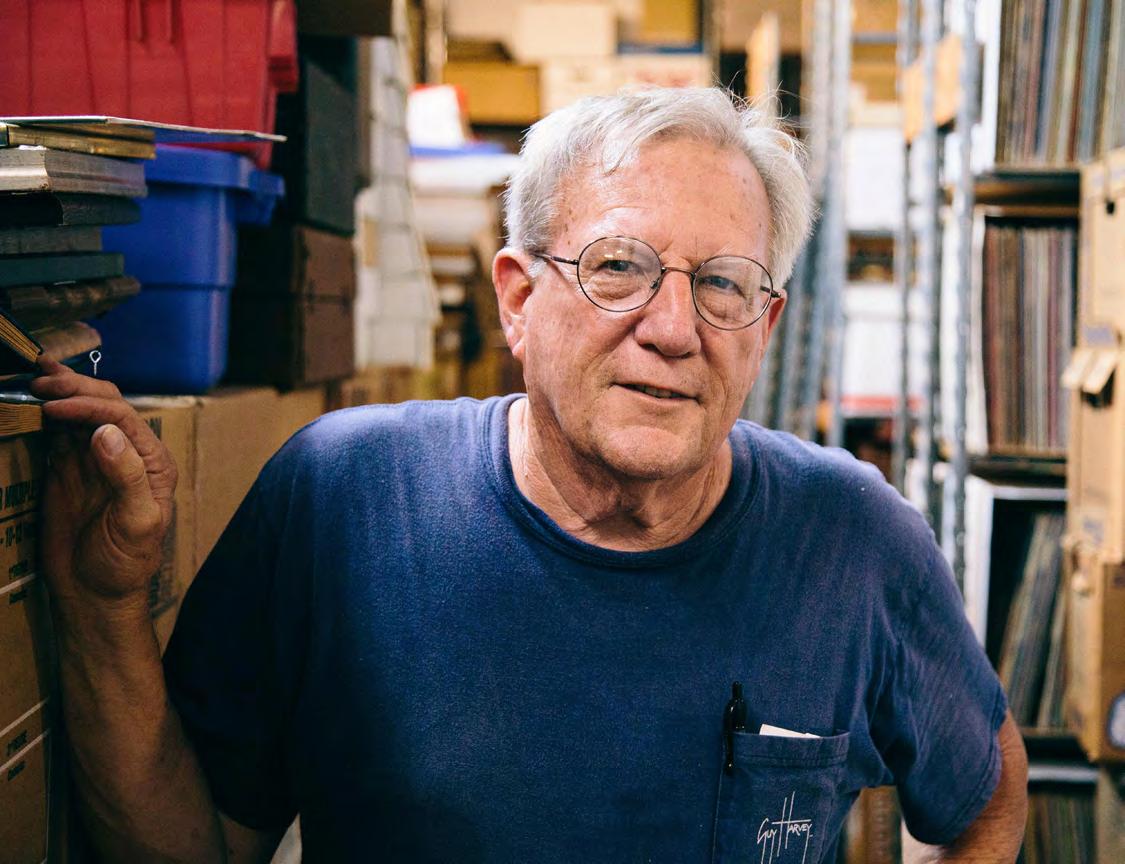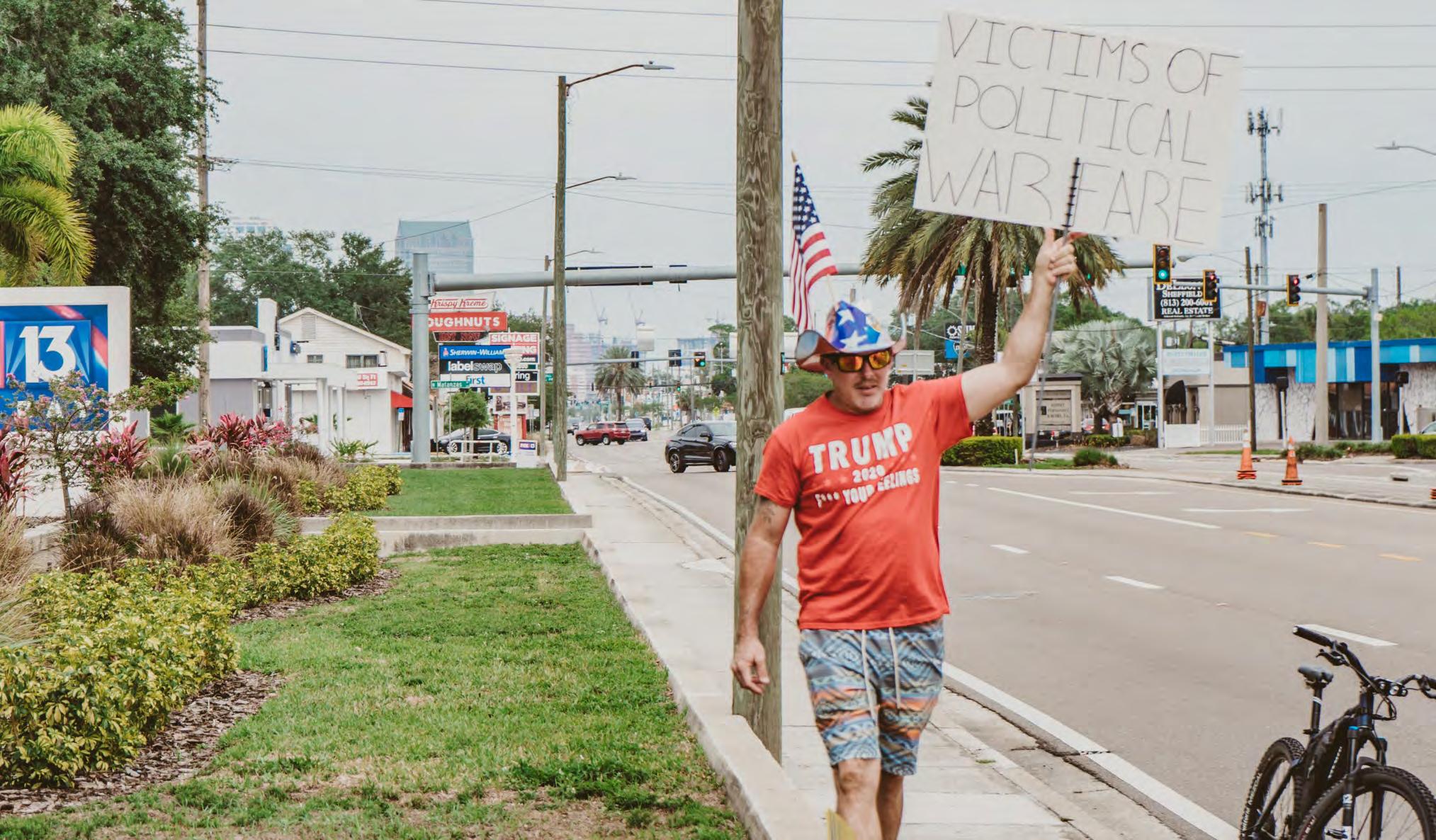
7 minute read
Just a Taste
Local restaurants wade into eSantis’ phase one opening.
By Ray Roa
Advertisement
t’s happening. For better or worse, Tampa Bay is coming out of its cage. Will we end up doing just fine? That’s up in the air along with the ollective throat particles of people who’ve been resumably cooped up and social distancing ike good little citizens for the last seven weeks.
On Monday, the City of Tampa opened more han a dozen parks and dog parks, plus four eaches. Pinellas beaches were back open, too, ut Sheriff Bob Gualtieri said deputies had to lose Pass-a-Grille beach to nonresidents due o capacity.
And while a healthy number of restaurants nd cafés—like King State coffee in Tampa eights, the Columbia Restaurant Group’s oody Goody, and Res Mesa—are opting to tick with takeout and delivery while keeping heir dining rooms closed, many have decided to o with Gov. Ron DeSantis’ phase one reopenng plan which says they may operate at 25% apacity indoors, with six-feet of space between ables outdoors.
“I want to be clear that the state’s order does ot require restaurants and retail establishents to open on Monday, it simply permits them o do so if they choose to do so,” St. Petersburg ayor Rick Kriseman wrote, adding that retail stablishments that were previously closed may lso reopen on Monday at 25% occupancy. His eading of the recent order is that localities annot expand the governor’s restrictions, only urther restrict them.
“I will not do that in this instance,” Kriseman dded.
On Monday, during an appearance on the Midpoint” news show on community radio staion WMNF 88.5-FM, Kriseman said the City f St. Petersburg was looking at ways for resaurateurs to increase outdoor capacity so that estaurants could have a better shot at paying ent with just a fraction of their usual business.
Across the bridge in Tampa, Mayor Jane astor was already doing that very thing with er Lift Up Local Economy Recovery Plan, which ets restaurants and retail stores legally expand nto public rights-of-way and private parking reas without a city permit. “Street activation ones”—including parts of downtown and Tampa Heights’ Franklin Street, Swann Avenue and S. Dakota Avenue in South Tampa, Grand Central Avenue in the West River district and Seventh Avenue in Ybor City—are also closed 24-7 while parts of S. Howard Ave. are closed from 5 p.m.-10 p.m. Face masks are required for front-of-house staff, along with disposable paper menus and reduced table-to-waitstaff contact (so don’t hop on fucking Yelp when your water is topped off right when you want itto be, OK?). It’s not required by the plan, but the city is strongly encouraging restaurants to test employees and implement contactless ordering and payment.
Critics of DeSantis’ move say it makes it look like the governor is doing what he can to kickstart the flailing economy while taking attention off an abysmal unemployment system that was widely panned as the worst in the nation. What’s more is that scores of small businesses have been left out of the federal government’s Payment Protection Plan and Economic Injury Disaster Loan emergency advance programs.
On Tuesday, WFTS looked at accounting records and reported that Florida’s unemployment fund earned nearly $25 million in interest in the first three months of this year—more in interest on its largely untapped unemployment fund than any other state.
A spokesperson for the Florida Department of Economic Activity (DEO) told the station, “In March, we did receive money faster than we could distribute it, which is why there was a minor increase in the Trust Fund.”
An unemployment insurance expert with the National Employment Law Project added that Florida is “unemployment insurance expert with the National Employment Law Project.”
And while both Hillsborough and Pinellas have made testing more widely available in the last 10 days, at the time of this writing, state has still only tested less than 2% of its population.
Experts say that massive numbers of tests are required in orderto properly screen a community to determine the scope of the virus. Plus, anyone who tests positive must be tested more than once to confirm if they have recovered.
“According to Dr. Lockwood from the USF medical school, we need to have 2,240 tests a day,” Castor told WMNF on the same “Midpoint” program, citing Dr. Charles Lockwood, the dean of the University of South Florida’s College of Medicine. “We’re a ways away from that but we’re trying to get more and more and more testing done. One to get an accurate picture of the virus in our community but also as we start to open up to ensure that we’ll be able to identify any surges.”
Still, given the data available, it’s hard to argue that Tampa Bay hasn’t flattened its curve. Local safer-at-home orders have a lot to do with that; for the most part, citizens abided, but on Tuesday, the state recorded 113 new deaths from the coronavirus, including 11 in Tampa Bay. The state figure is a record, and it’s the first time Florida reported 100 deaths in a single day.
Castor told WMNF that coronavirus cases would increase after this first phase of reopening. She and Kriseman said their counties are committed to finding an effective method of contact tracing, which requires public health workers to work with COVID-19 patients in recalling everyone whom they’ve had close contact with while they may have been infectious. The workers then warn those contacts of their potential exposure as rapidly and sensitively as possible.
The Centers for Disease Control and Prevention (CDC) says, “To protect patient privacy, contacts are only informed that they may have been exposed to a patient with the infection. They are not told the identity of the patient who may have exposed them.”
The mayor also said that syndromic surveillance—where positive test results are placed on a map—will be utilized along with results from a survey Hillsborough County is asking residents to complete.
“We will map those results as well and it will ask them if they have any symptoms, signs, those kinds of things,” Castor added. “So through that mapping system we should be able to identify hotspots as they pop up and go out and address them immediately as opposed to allowing it to spread and present itself at the hospital when it’s too late.”
Castor respects what she called DeSantis’ “thoughtful” and “very, very gradual” opening because it’s grounded in available data; she believes its slow pace will give her the option to ratchet the opening back quickly in the event of an uptick in cases.

ROSE-COLORED GLASSES: In spite of the economics, Percy Rosemurgy is going to give opening his dining room a go.
“We hope not to have to do that,” Castor said, adding that Tampa will have code enforcement and police officers out educating and encouraging the public to wear face masks, not gather in large groups and adhere to social distancing.
“I have to have responsibility to keep all of our citizens safe and healthy. But I also have a responsibility towards our economic health as well,” Castor explained.
And just how the economics of phase one play out remains to be seen. Over the weekend, CL asked local restaurants and retail shops to detail their reopening plans. More than 60 responded before Wednesday (we’ve got those spots listed at cltampa.com).
Little Greek franchise Percy Rosemurgy— who owns and operates locations in North Tampa, South Tampa andLakewood Ranch—told Creative Loafing Tampa Bay that he was able to get a PPP loan through Regions Bank. He credits his success in getting the loan to a little bit of the extreme preparation he did before applying, but mostly ultimately chalks the approval up to luck.
“The process seemed to go pretty smoothly, especially considering the horror stories I’ve heard about other businesses’ applications,” Rosemurgy said. He noted that the next few months will be unpredictable, but that the loan will help him get to the point where he can find out.
Little Greek is making some seating available in its dining room, but he’s still not sure whether doing so makes economic sense.
“Operating with a cap of 25% capacity is a not sustainable long-term business plan. I think it’s a good measured first step in restarting our industry in the state, but it’s simply not going to pay all the bills,” Rosemurgy added. “I don’t see delivery or take-out slowing down any time soon. For all I know, that could be the new normal for all of us.”
Louie Spetrini, a managing partner a Nueva Cantina, did not get the PPP loan. His St. Petersburg restaurant is going to try reopening its dining room in accordance with new health regulations, and is only taking reservations for seating. He, too, was unsure of how the plan would work out.
“I understand a slow opening of the economy, but as a small business owner how can we possibly hire back all of our employees when we are not allowed to fully open,” Spetrini told CL. “It is a tough situation. Everyone just wants to get back to work.”
And as we do, Castor evoked Winston Churchill’s 1942 speech after the British drove German troops out of Egypt.
“I want everybody to know… This isn’t the end, it isn’t the beginning of the end. It’s the end of the beginning,” Castor said. “So please don’t let your guard down.”










